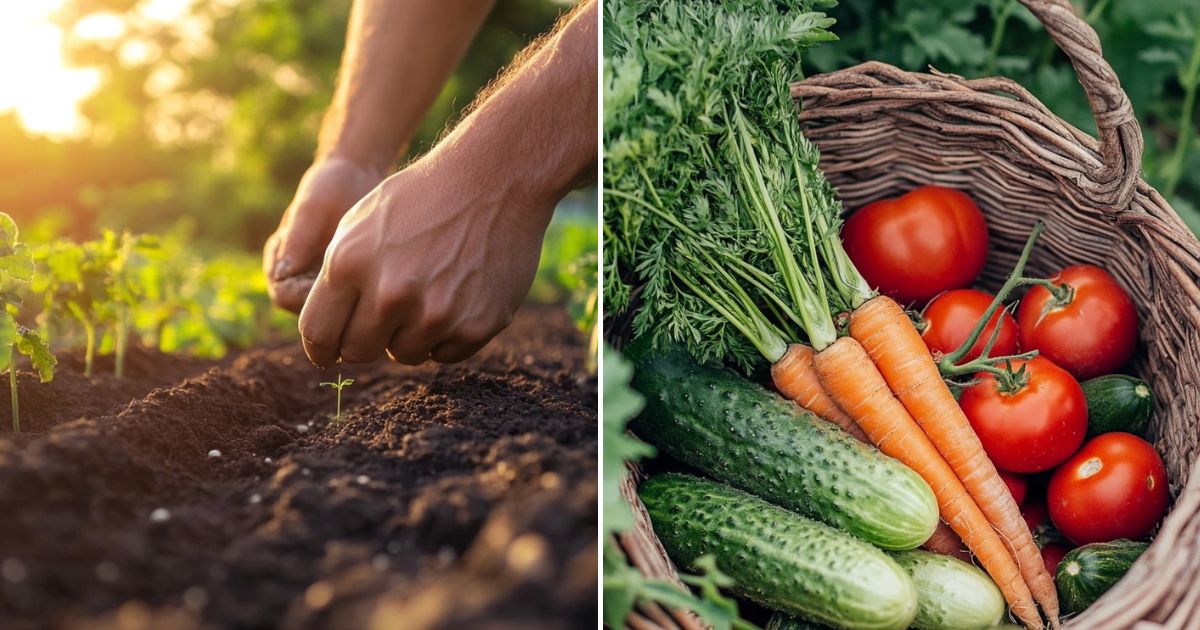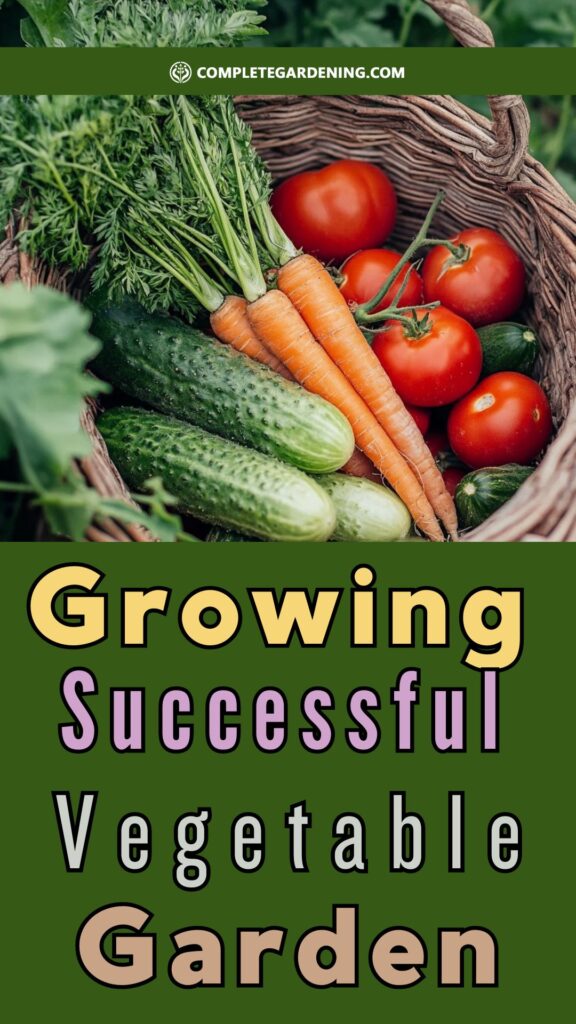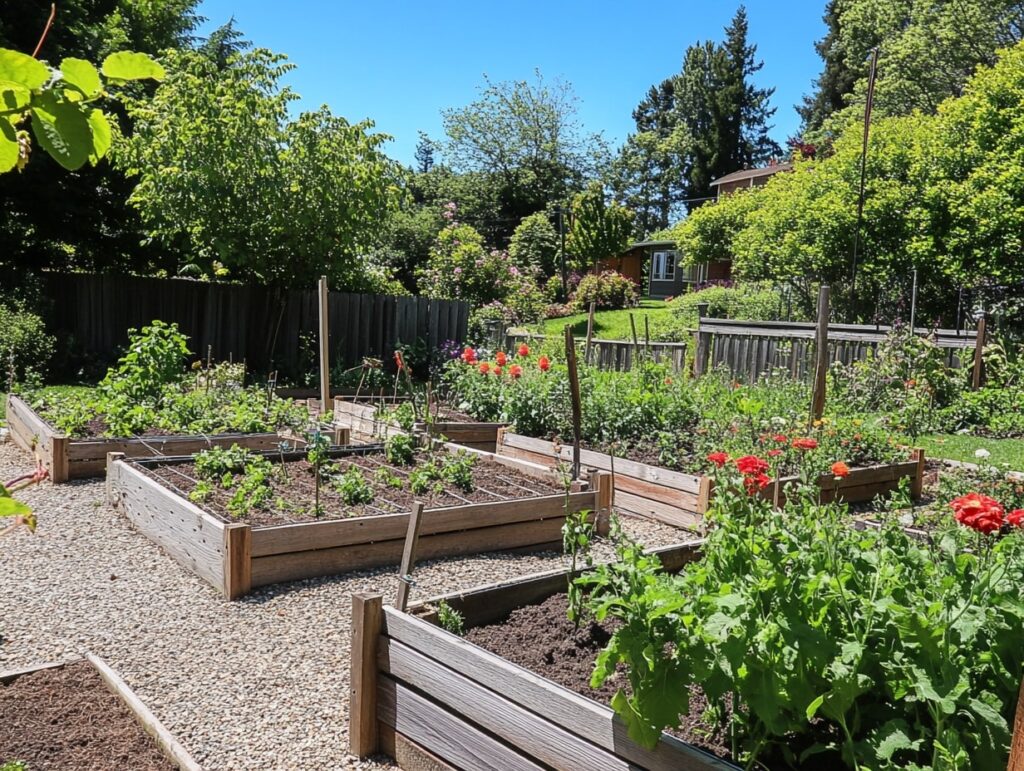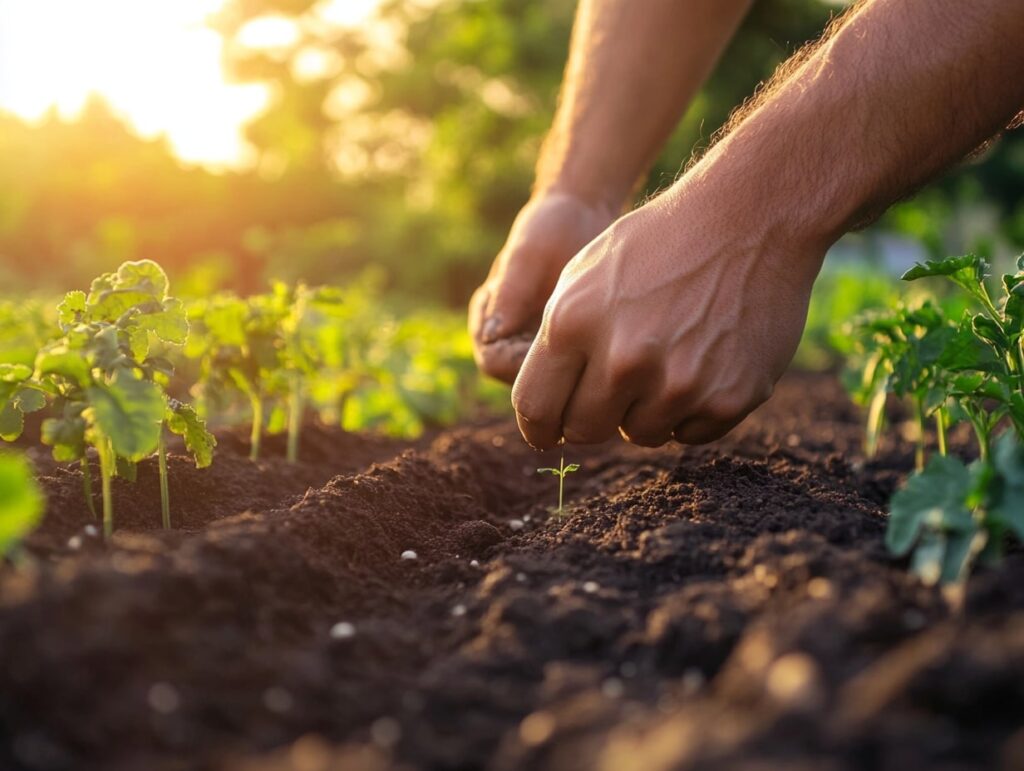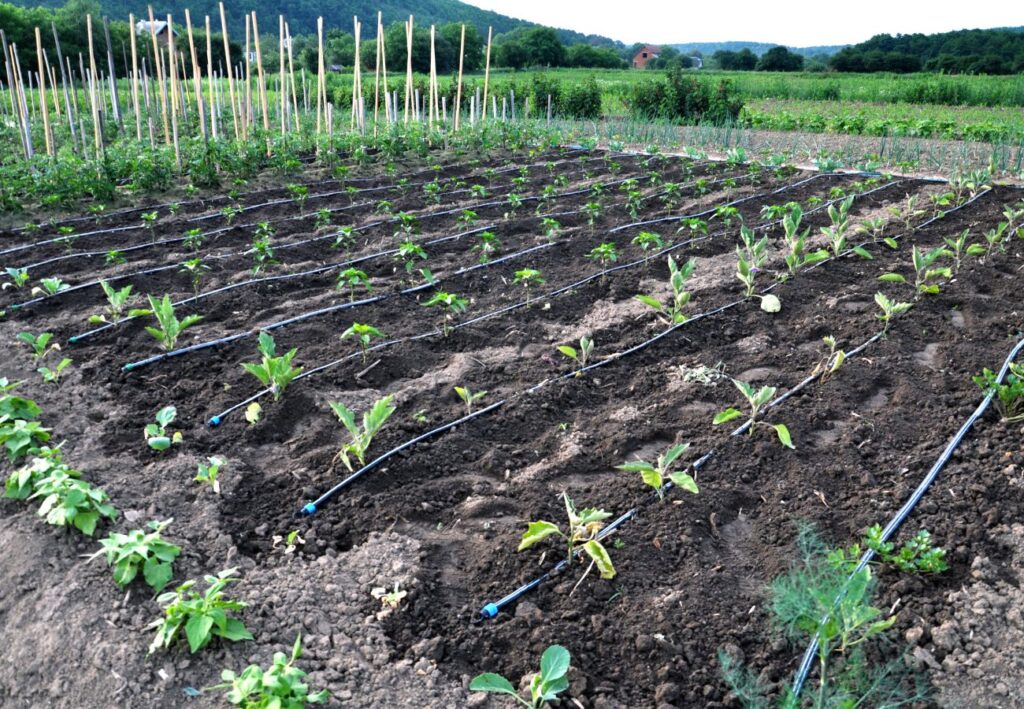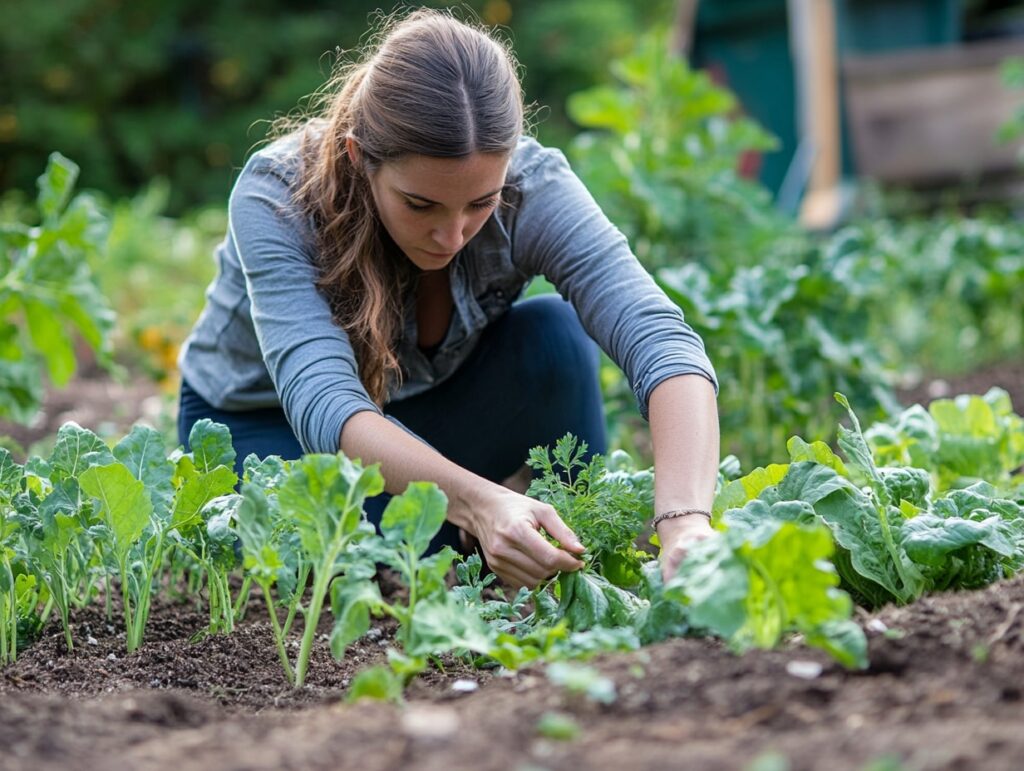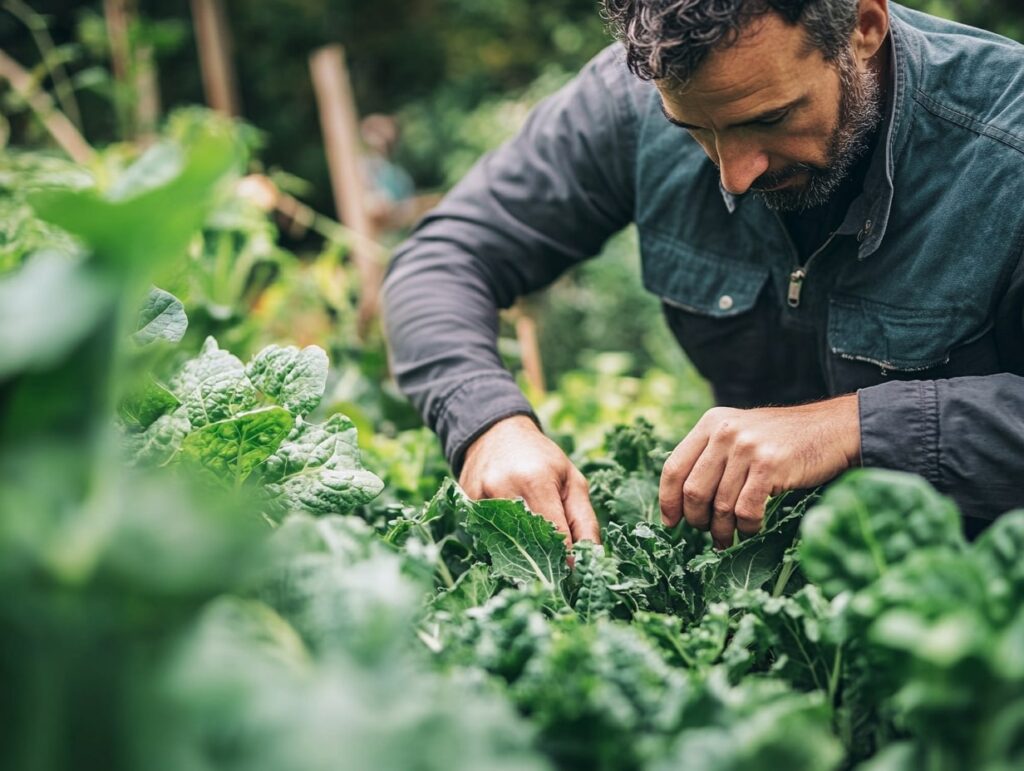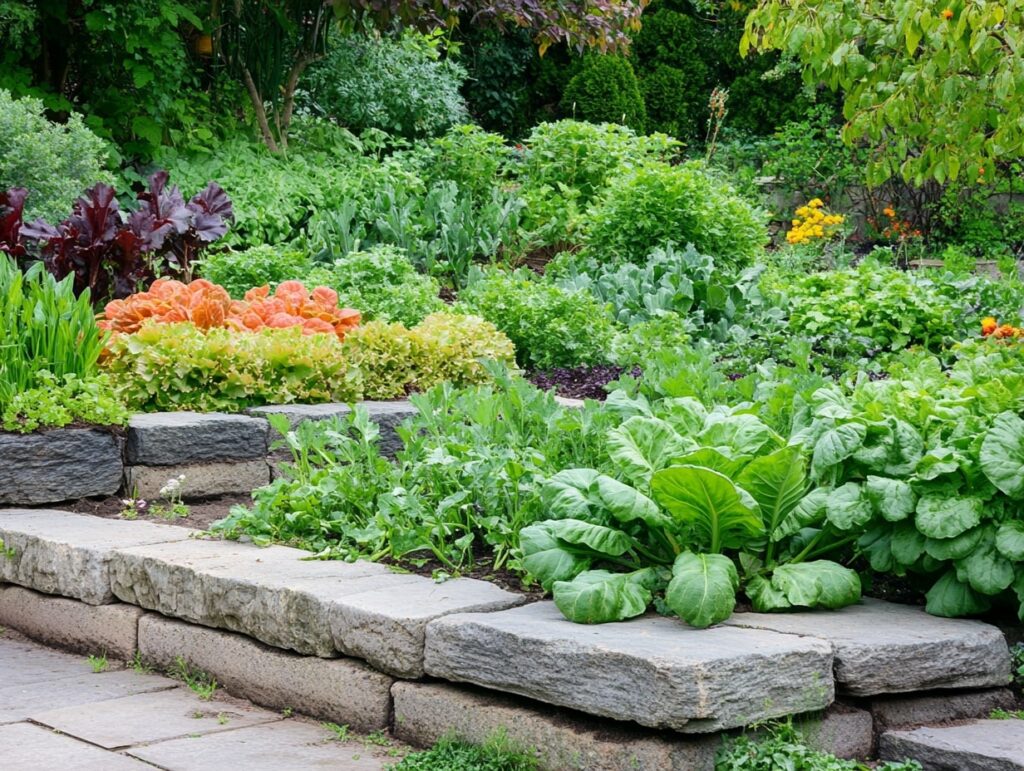Have you ever dreamt of plucking sun-ripened tomatoes and crisp cucumbers right from your backyard, knowing they’re as fresh and organic as they come?
Creating a thriving vegetable garden might be easier than you think, and it promises not just delicious produce but also a gratifying gardening journey.
Choosing the perfect location for your garden involves more than just picking a sunny spot. You’ll discover how soil quality, sunlight, and space play crucial roles in your garden’s success.
By tailoring your vegetable selection to your climate and personal tastes, you can create a garden that’s uniquely yours.
The secret to a bountiful harvest lies in consistent care. Regular watering, diligent weeding, and effective pest control are your allies in this endeavor.
Embrace these tasks, and you’ll soon find your garden flourishing, providing you with an abundant supply of fresh, homegrown vegetables. Let’s dive into the steps that will make your garden dreams a reality.
Planning Your Vegetable Garden
To create a successful vegetable garden, you need to consider the location, appropriate vegetables for your climate, and an efficient garden layout.
Selecting the Right Location
Choosing the right spot is crucial. Vegetables need at least 6-8 hours of direct sunlight daily. Look for an area free from strong winds, with well-draining soil to prevent waterlogging. Make sure there is easy access to water for irrigation.
If your yard has poor soil, consider raised beds. These offer better control over soil quality. Also, avoid areas with heavy foot traffic to protect young plants. Proximity to your kitchen can also encourage regular maintenance and harvesting.
Choosing Vegetables for Your Climate
Select vegetables suited to your local weather conditions. Warm-season crops like tomatoes, peppers, and cucumbers thrive in hot climates, whereas cool-season crops such as lettuce, peas, and carrots are ideal for cooler regions.
You can extend your growing season by starting seeds indoors or using row covers. Research your area’s USDA Hardiness Zone to understand the best planting times. Also, consider heirloom or local varieties, which are adapted to your specific climate and soil conditions.
Garden Layout and Design
Plan your garden layout for maximum efficiency. Group plants with similar water and sunlight needs together. Companion planting can help improve soil health and repel pests. For example, plant basil near tomatoes to ward off insects.
Use raised beds or rows to keep things organized and accessible. Ensure there is sufficient space between plants for proper air circulation and growth. Include pathways to make it easier to reach and tend plants.
Keep record of plant locations year-to-year to rotate crops and prevent soil depletion.
Soil Preparation and Fertilization
Proper soil preparation and effective fertilization are crucial for a thriving vegetable garden. It’s important to test and amend your soil, and choose between organic and inorganic fertilizers to provide necessary nutrients.
Testing and Amending Soil
Start by testing your soil to understand its pH, nutrient levels, and texture. You can use a home testing kit or send samples to a lab for detailed analysis. Knowing your soil’s condition helps you determine what amendments it needs.
If your soil is too acidic or too alkaline, add lime or sulfur respectively to balance the pH. Incorporate organic matter such as compost or manure to improve soil structure and fertility. This enhances moisture retention and encourages beneficial microorganisms.
Regularly renewing soil amendments ensures a healthy growing environment. Each season, incorporate fresh organic material to maintain soil health.
Organic vs. Inorganic Fertilizers
Organic fertilizers like compost, manure, and bone meal release nutrients slowly and improve soil structure. They also encourage beneficial soil organisms. While they’re generally eco-friendly, they sometimes require larger quantities for visible results.
Inorganic fertilizers are synthetically produced and offer immediate nutrient availability. They’re easy to apply and measure, making it simpler to control nutrient levels. However, overuse can lead to soil degradation and environmental harm.
Decide based on your gardening goals and environmental considerations. For sustainable gardening, combining organic fertilizers with occasional inorganic ones can balance soil health and plant nutrition effectively.
Planting Your Vegetables
When planting your vegetables, focusing on sowing seeds directly, transplanting seedlings, and paying attention to spacing and depth can ensure a fruitful garden.
Sowing Seeds Directly
Planting seeds directly into the soil is a straightforward method. Choose a sunny spot with well-drained soil. Create shallow furrows using your hand or a small tool. Evenly scatter the seeds along the furrow. Cover them lightly with soil and water gently.
Three Key Tips:
- Timing: Check seed packets for optimal planting time.
- Depth: Plant seeds at the recommended depth.
- Distribution: Avoid crowding by spacing seeds appropriately.
Keep the soil moist but not soggy. Use mulch to retain moisture and suppress weeds.
Transplanting Seedlings
Transplanting seedlings gives plants a head start. Harden off seedlings by gradually exposing them to outdoor conditions. Dig holes slightly larger than the root ball.
Carefully remove seedlings from their containers, handling by the leaves, not the stems. Place them in the holes and firm the soil around the roots.
Important Steps:
- Timing: Transplant in the late afternoon or on a cloudy day.
- Watering: Water the seedlings before and after planting.
- Protection: Use row covers to protect tender plants from pests.
Keep an eye on weather forecasts for any unexpected frost and cover if needed.
Spacing and Depth Considerations
Proper spacing and depth are essential for healthy growth. Follow the guidelines on seed packets or plant tags. For example, tomatoes often need at least 24 inches between plants.
Guidelines:
- Spacing: Ensures good air circulation and reduces disease risk.
- Depth: Prevents plants from being buried too deep or too shallow.
Use a ruler or measuring tape to maintain consistent spacing. Adjust as necessary depending on the growth pattern of specific vegetable varieties.
Daily Garden Maintenance
Keeping your vegetable garden thriving requires daily attention to watering, weeding, mulching, and managing pests and diseases. These tasks ensure your plants stay healthy and productive.
Watering Techniques
Water your vegetable garden consistently. Early mornings are ideal, allowing moisture to reach the roots before the heat of the day.
Use drip irrigation or soaker hoses to minimize water waste and deliver moisture directly to the soil. Avoid overhead watering to reduce the risk of fungal diseases.
Check soil moisture regularly by sticking your finger an inch into the ground. If it’s dry, it’s time to water.
Maintain even soil moisture; avoid letting the soil dry out completely or become waterlogged.
Weeding and Mulching
Regular weeding prevents competition for resources. Inspect your garden daily and remove weeds by hand or with a hoe.
Apply a layer of organic mulch, such as straw or shredded leaves, around your plants. Mulch suppresses weed growth, retains soil moisture, and improves soil quality as it decomposes.
Keep mulch a few inches away from plant stems to prevent rot and pest problems.
Pest and Disease Management
Check your plants daily for signs of pests or diseases. Look under leaves and along stems for any damage or unusual spots.
Use integrated pest management (IPM) strategies, which include physical barriers like row covers, biological controls such as beneficial insects, and chemical treatments only when necessary.
Remove any diseased plants promptly and practice crop rotation to reduce the likelihood of recurring problems.
Encourage a healthy ecosystem with companion planting, attracting beneficial insects that prey on harmful pests.
Harvesting and Storage
Efficient harvesting at the right time and proper storage techniques can significantly extend the shelf life of your vegetables. Focus on timing and storage conditions to maintain freshness and quality.
Picking Vegetables at the Right Time
Timing is crucial for harvesting vegetables. For instance, tomatoes should be picked when fully red and slightly firm, while cucumbers are best harvested when they reach 6-8 inches in length. Picking vegetables too early or too late can impact their flavor and texture.
Pay attention to the color, size, and feel of the vegetables. Carrots and beets are ready when they reach an appropriate size. For leafy greens, cut them when they are young and tender. Early morning is the best time to harvest as vegetables are most hydrated then.
Handle vegetables gently to avoid bruising, and use clean, sharp tools to cut them from the plant. This helps prevent damage and disease. Regularly check your garden to ensure you harvest at the prime time for each type of vegetable.
Storing Vegetables for Longevity
Proper storage methods vary between vegetables. Root vegetables like carrots and potatoes store well in cool, dark places. On the other hand, leafy greens such as lettuce are best kept in the refrigerator. Keep vegetables dry to prevent mold and rot.
Use breathable storage options like mesh bags or perforated plastic to extend the freshness of your produce. Tomatoes should be kept at room temperature until fully ripe, then refrigerated. Beans and peas can be blanched and frozen for long-term storage.
Label stored vegetables with the date of harvest to track freshness. Regularly check stored vegetables for signs of spoilage and remove any bad items promptly. This helps keep the rest of your produce in good condition.
Creating a productive vegetable garden is a journey that requires careful planning and consistent care. By selecting the right location, choosing suitable vegetables for your climate, and maintaining a well-organized garden layout, you set the foundation for success.
Proper soil preparation, effective watering, and vigilant pest management ensure your plants thrive. With dedication, you’ll enjoy the satisfaction of harvesting fresh, homegrown produce right from your backyard, making all the effort worthwhile.
